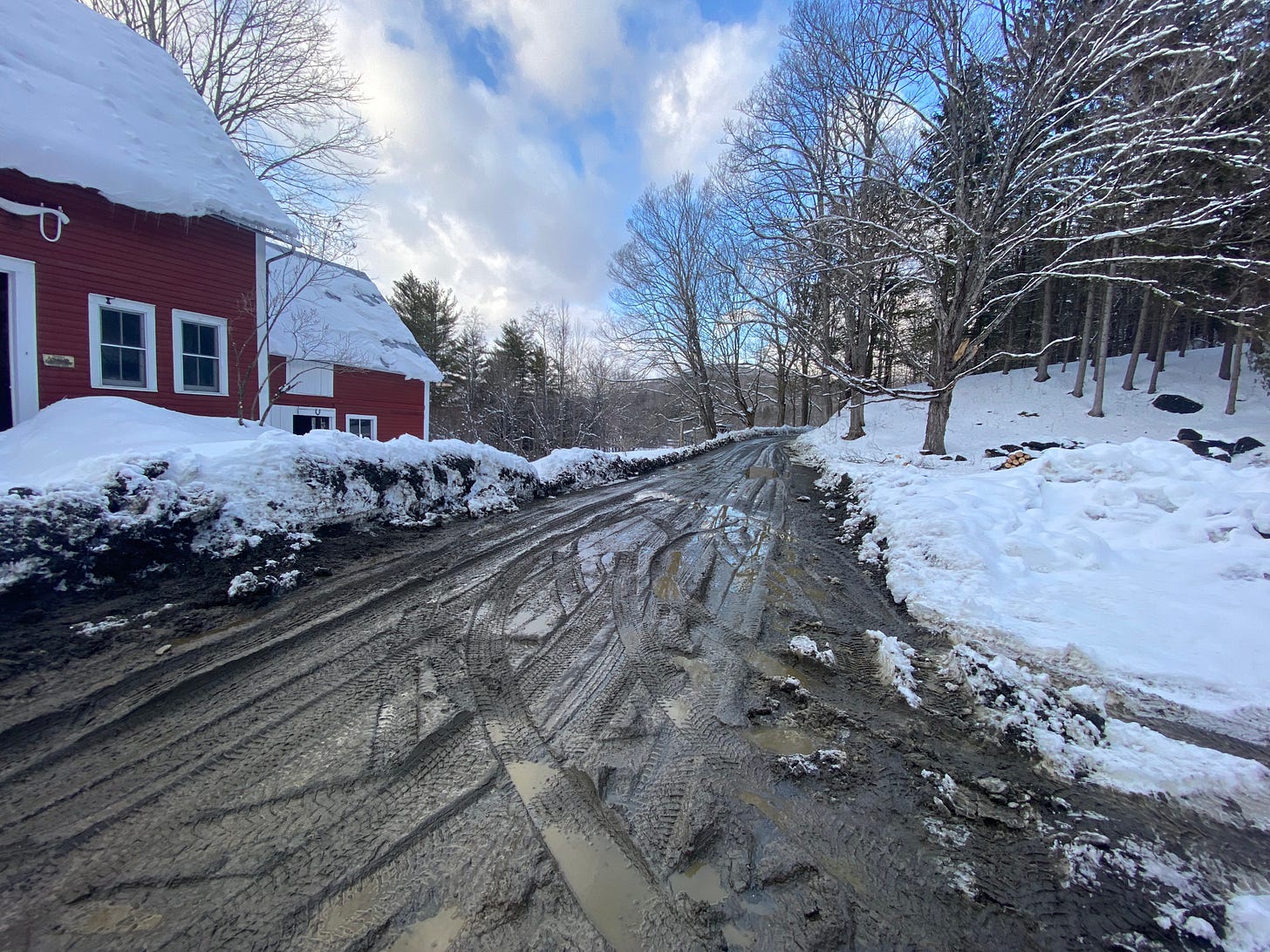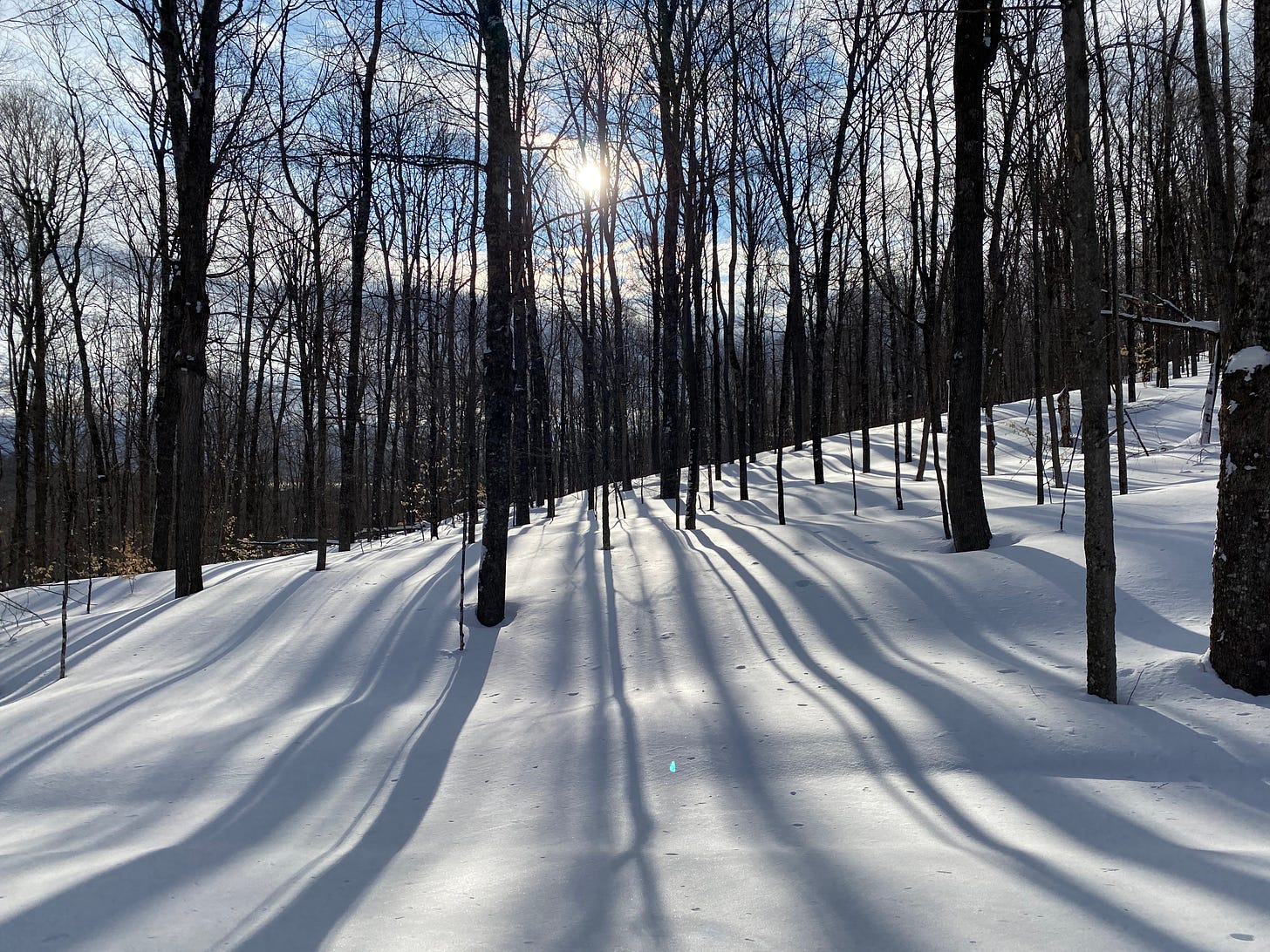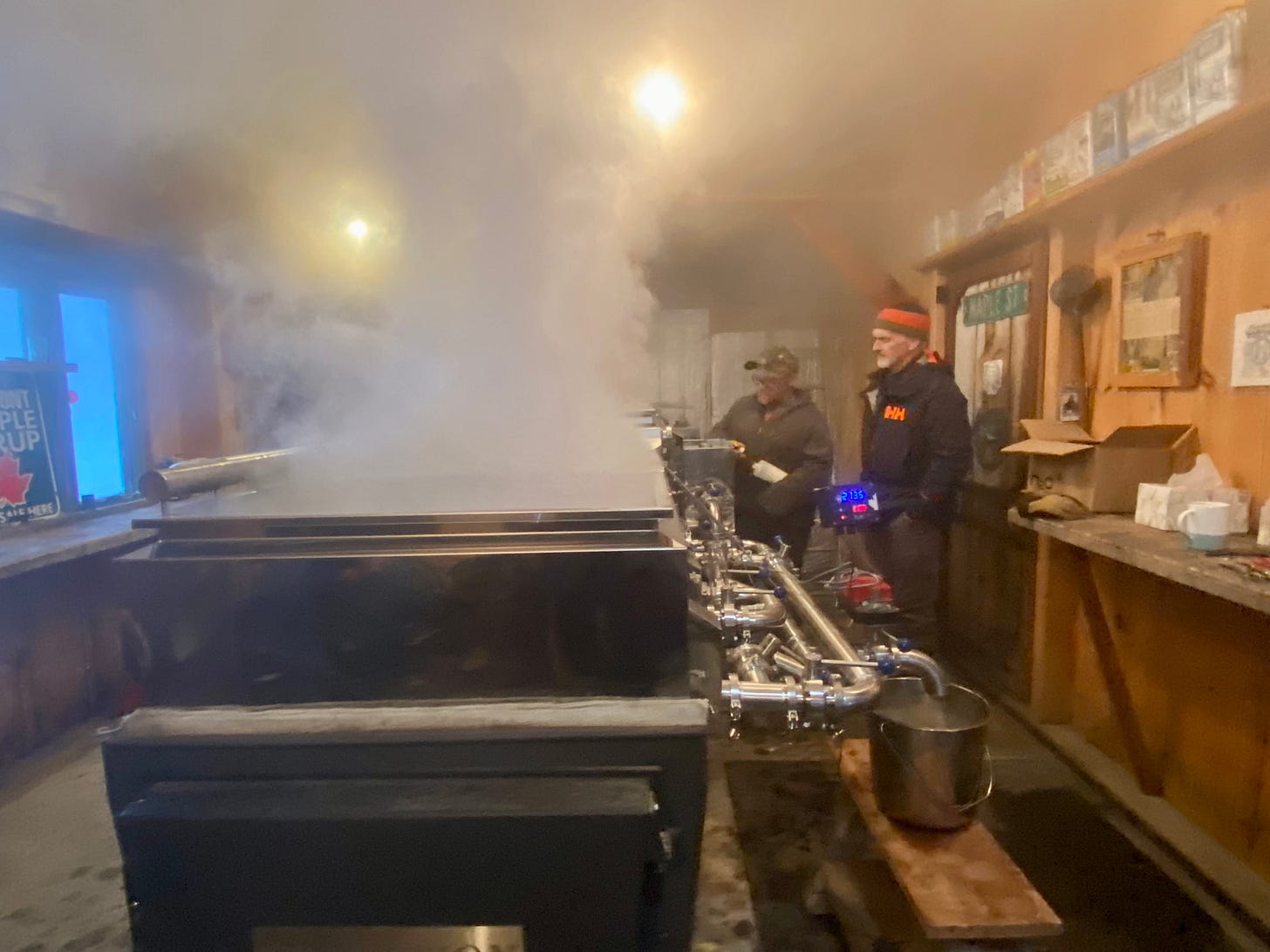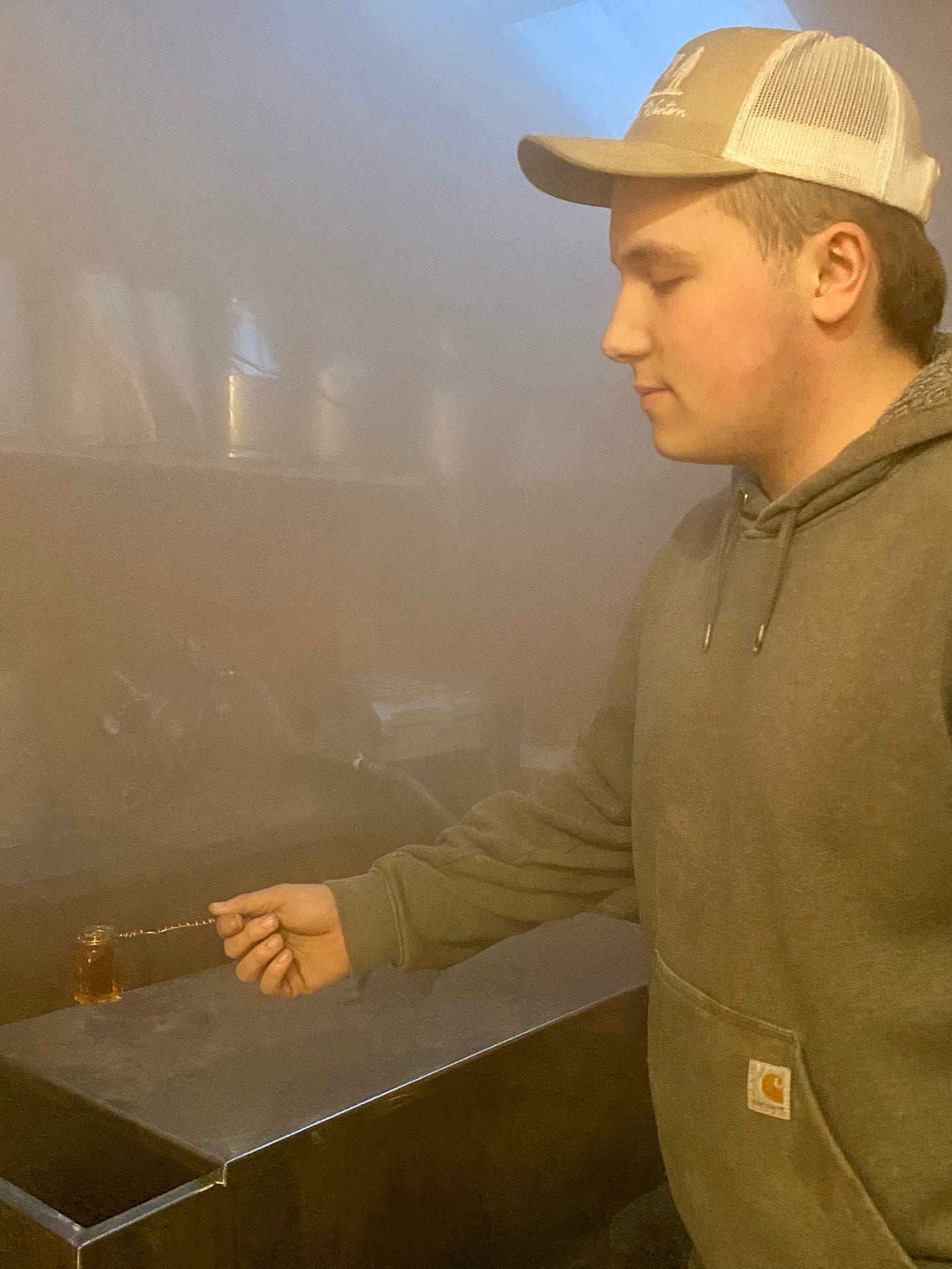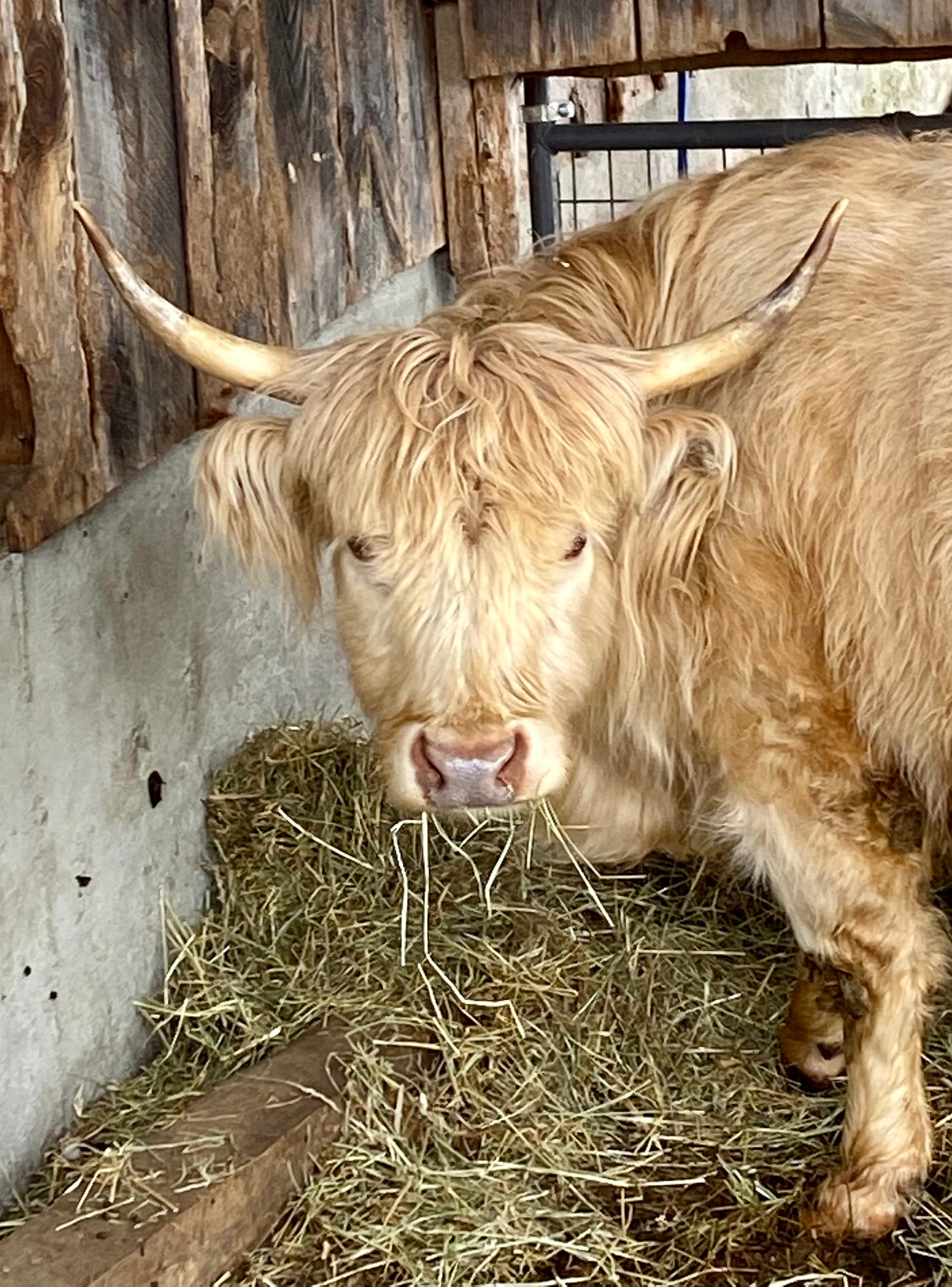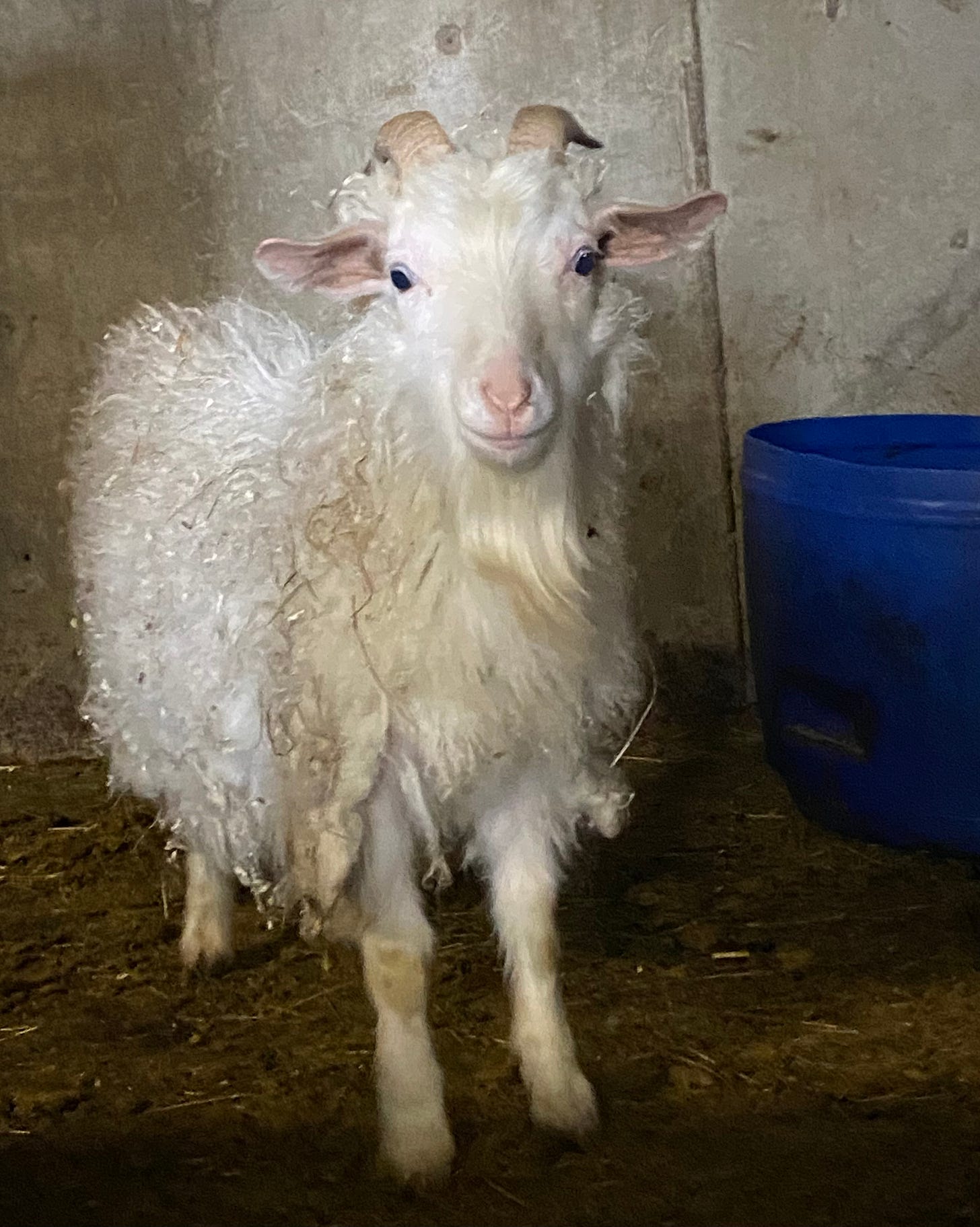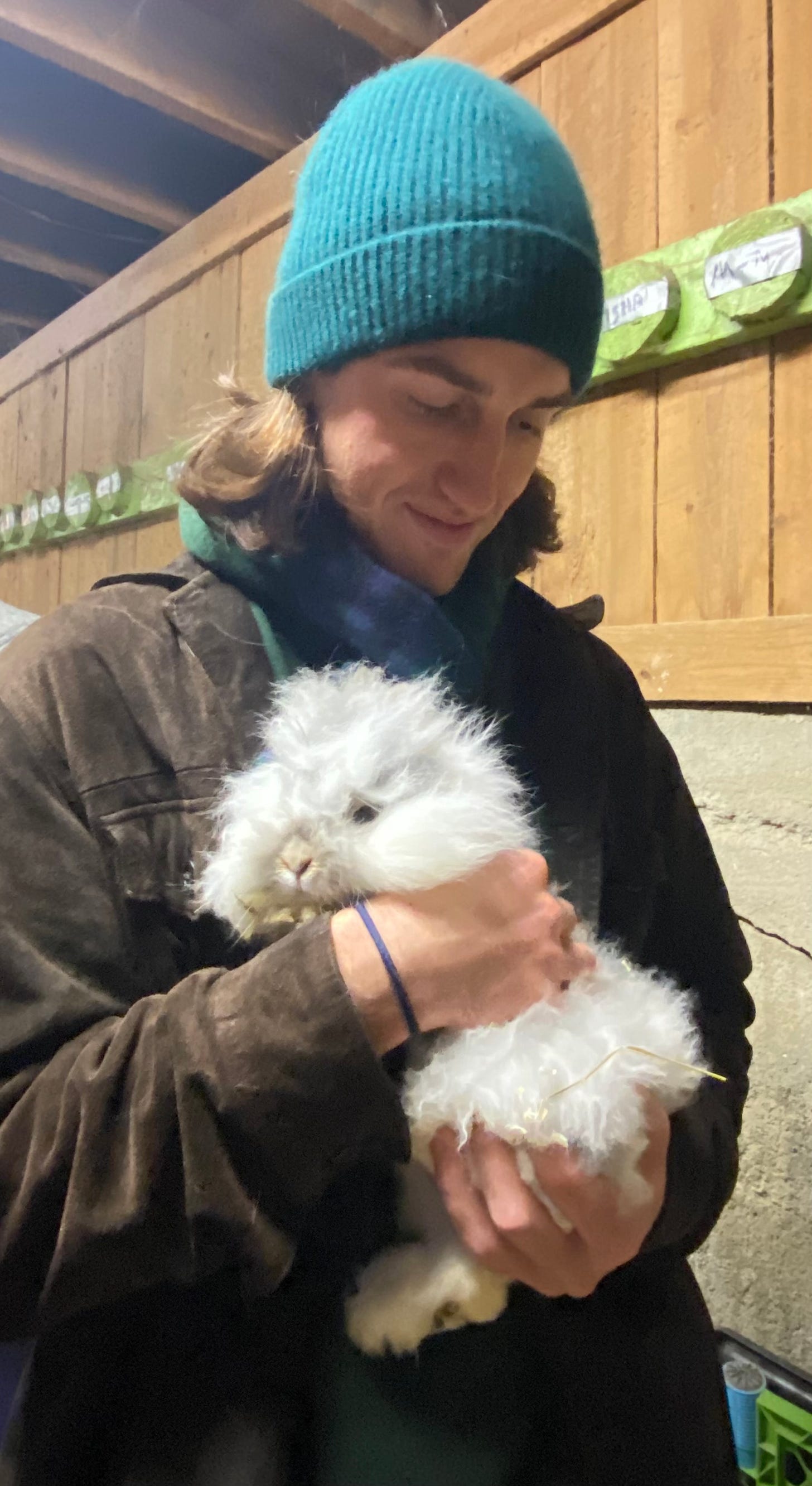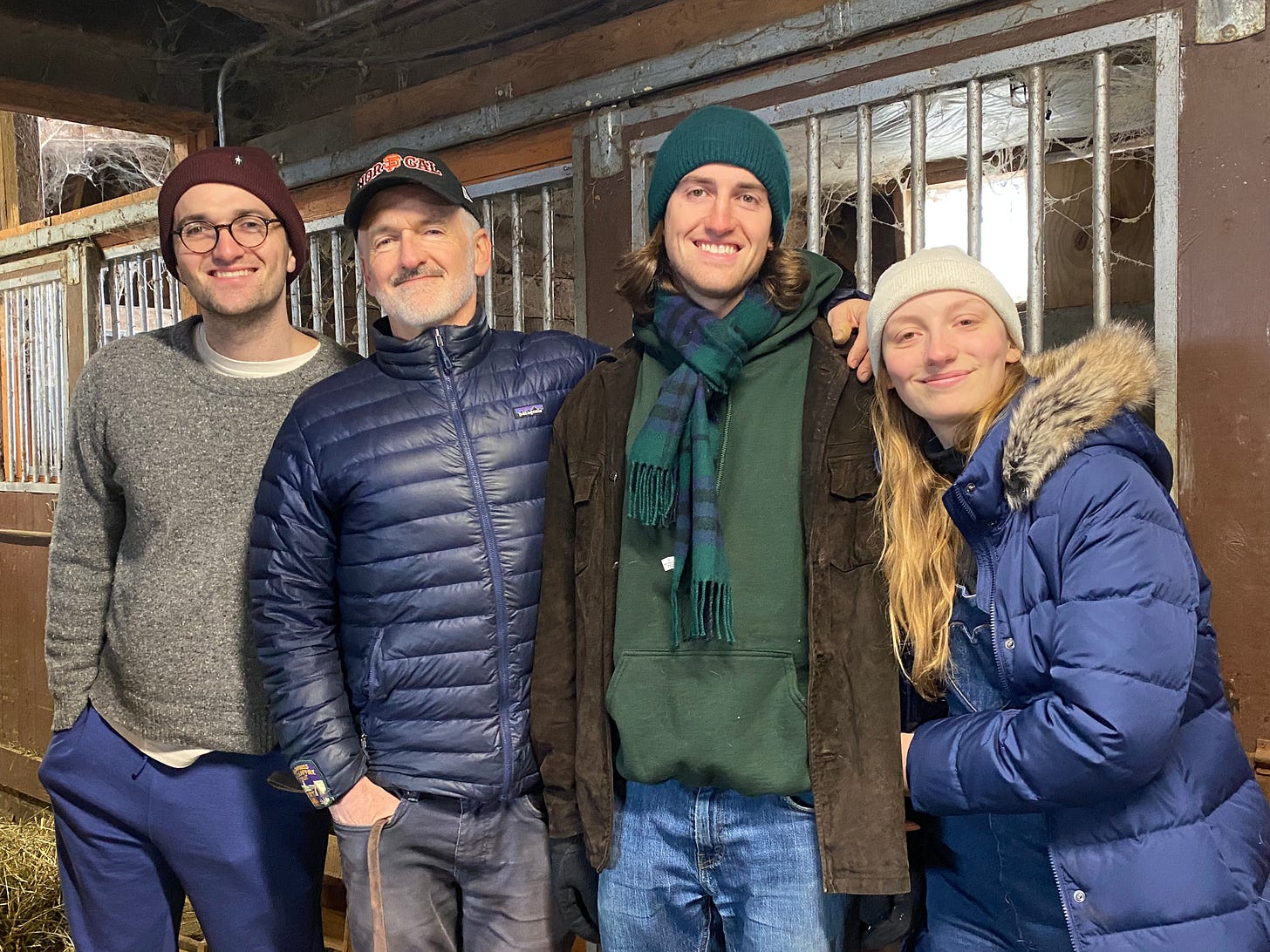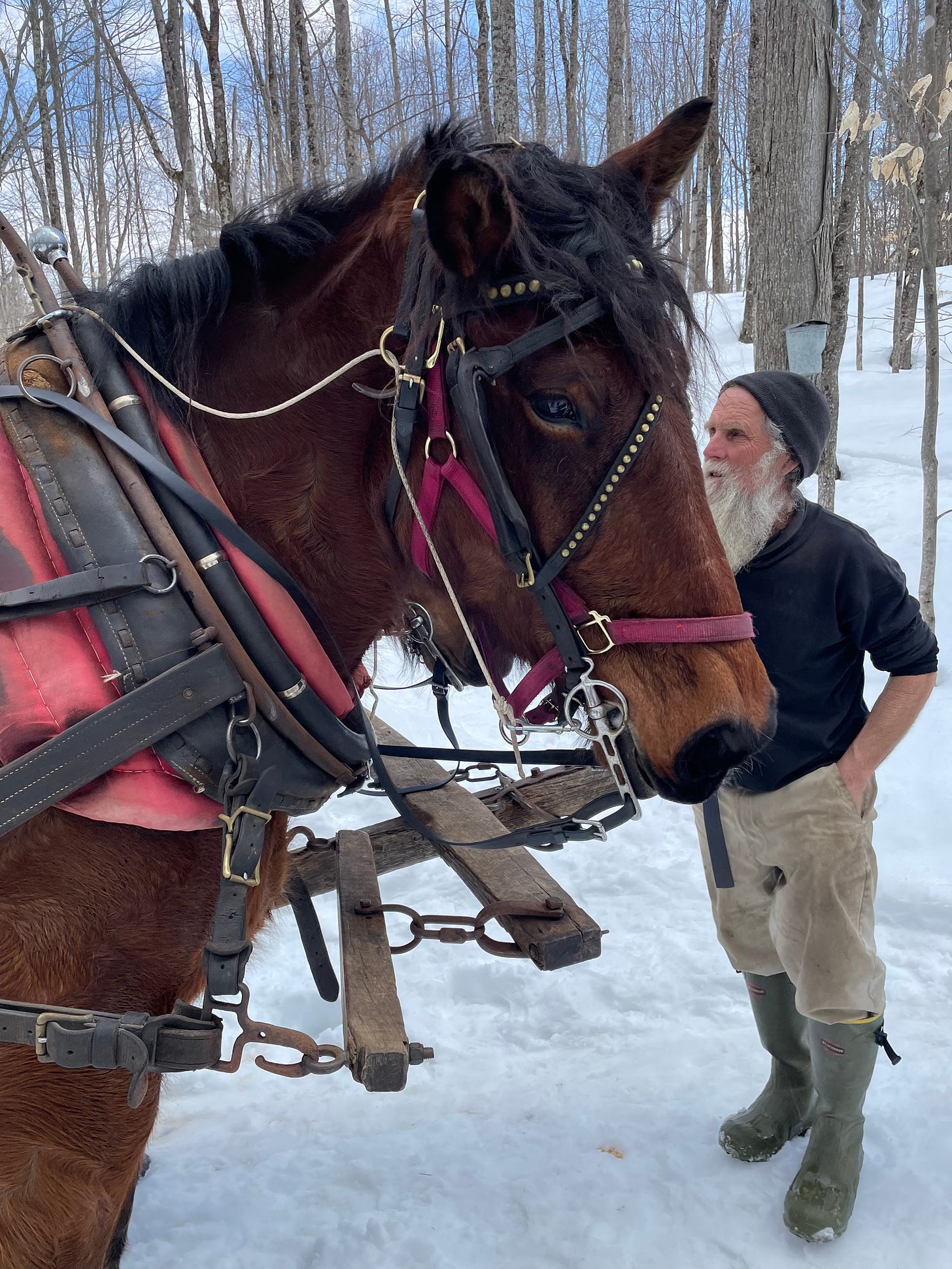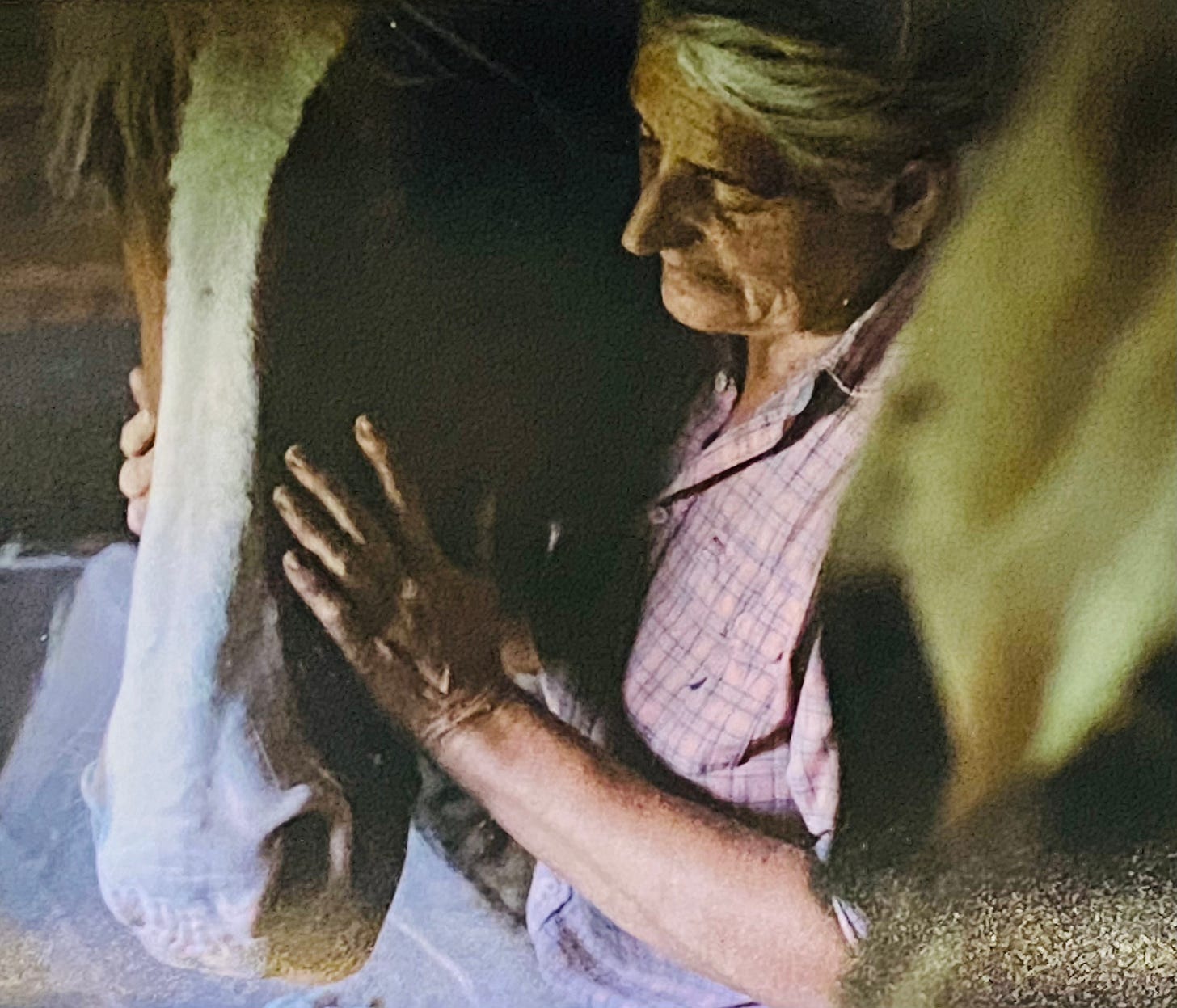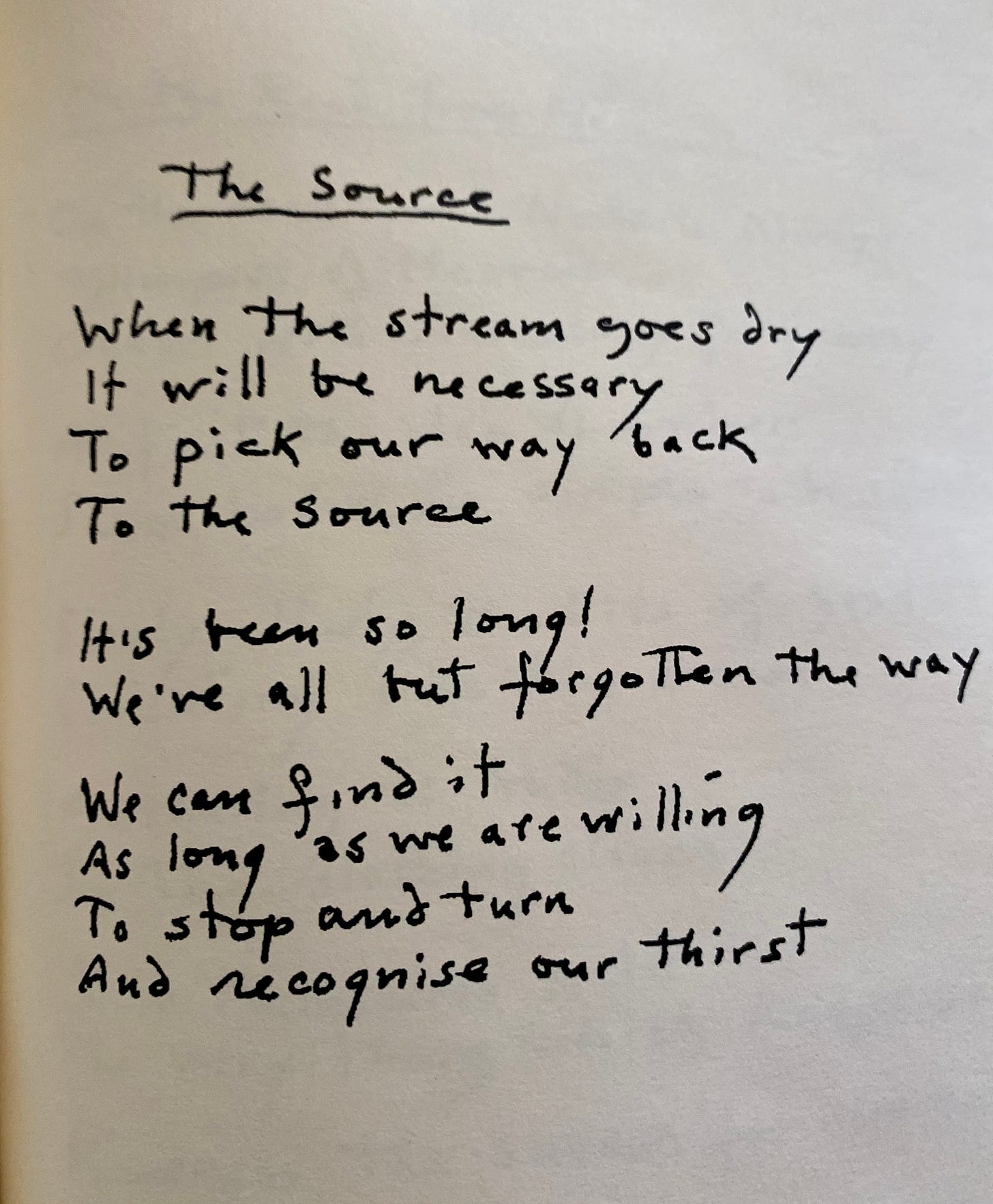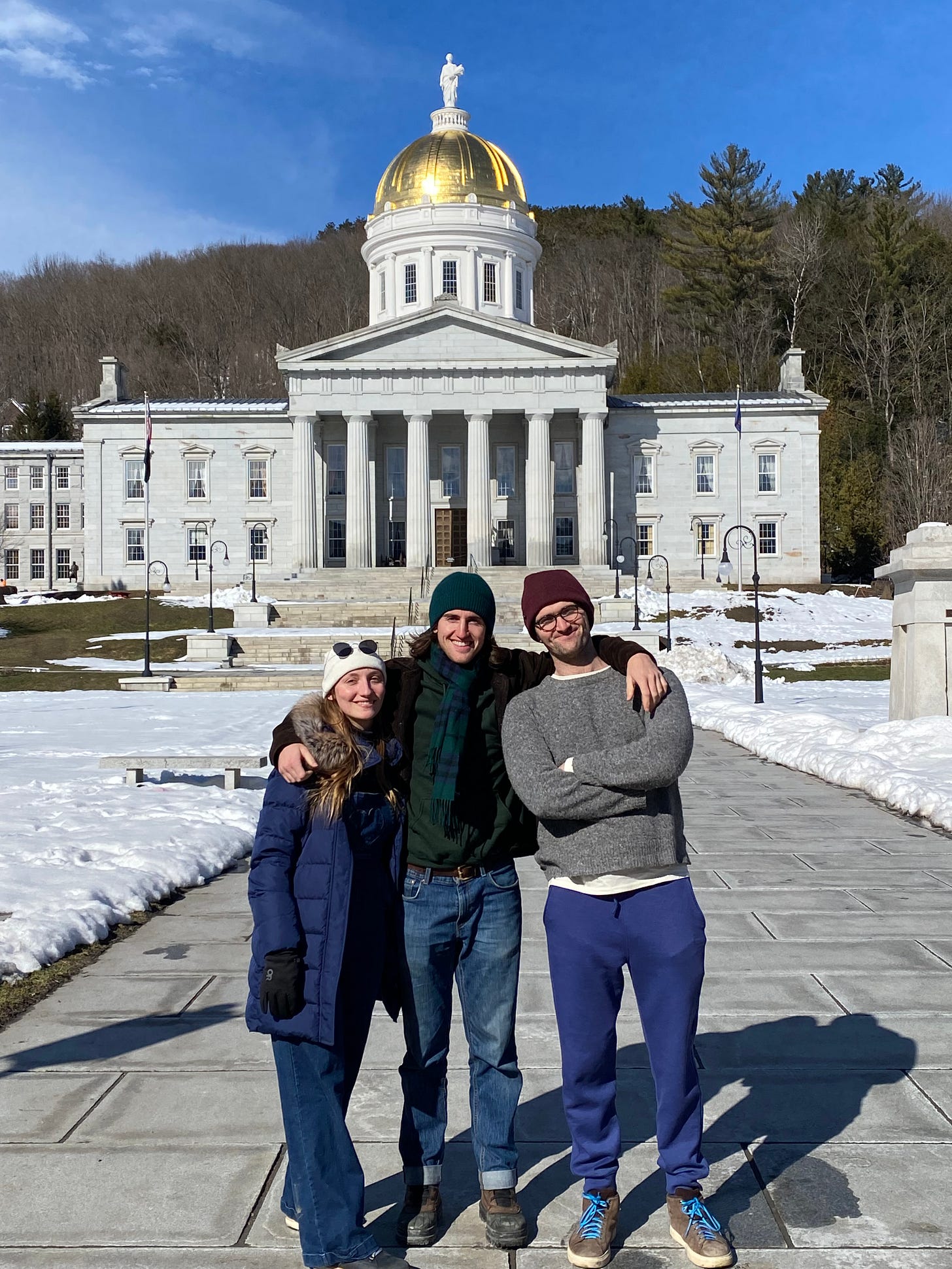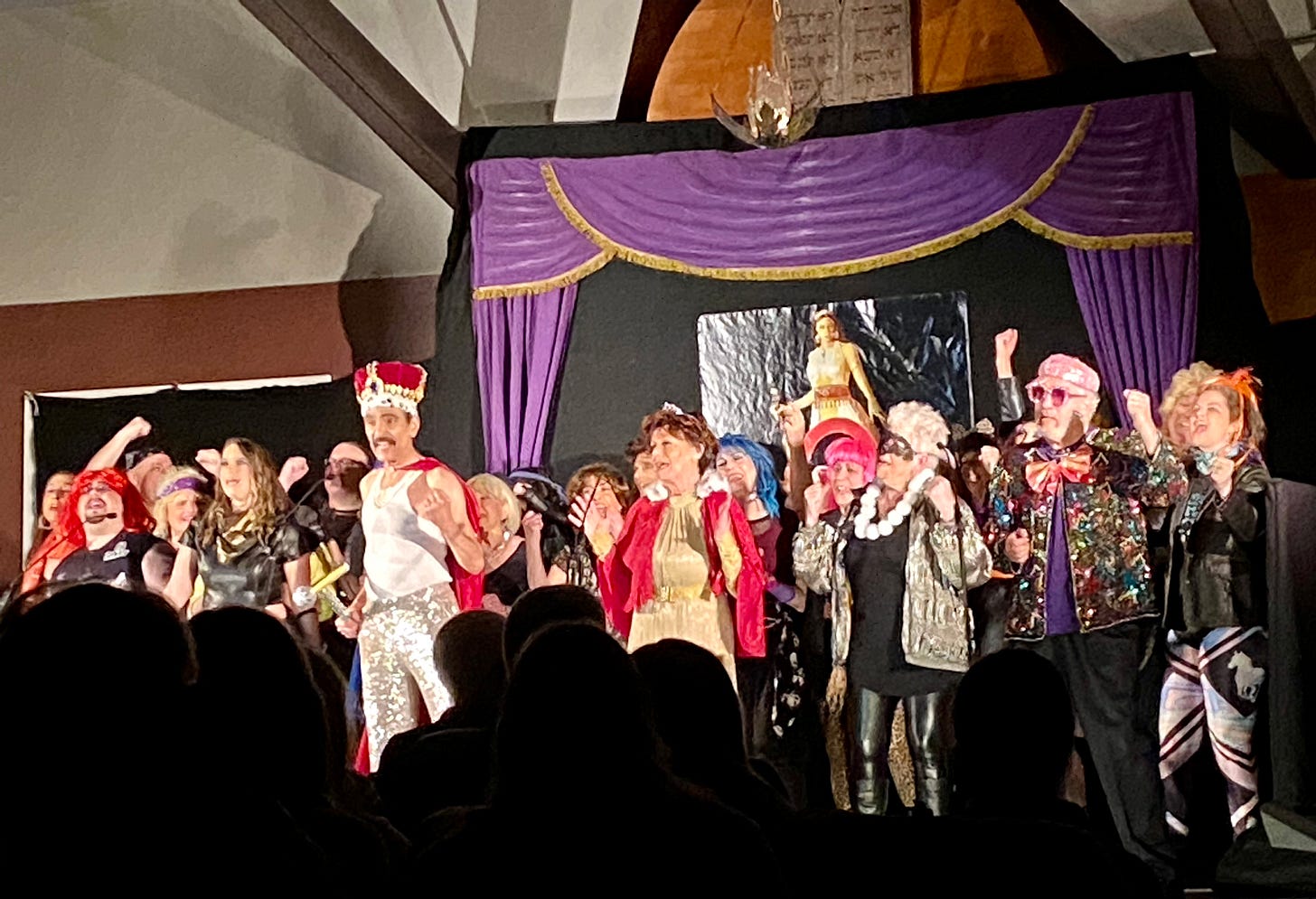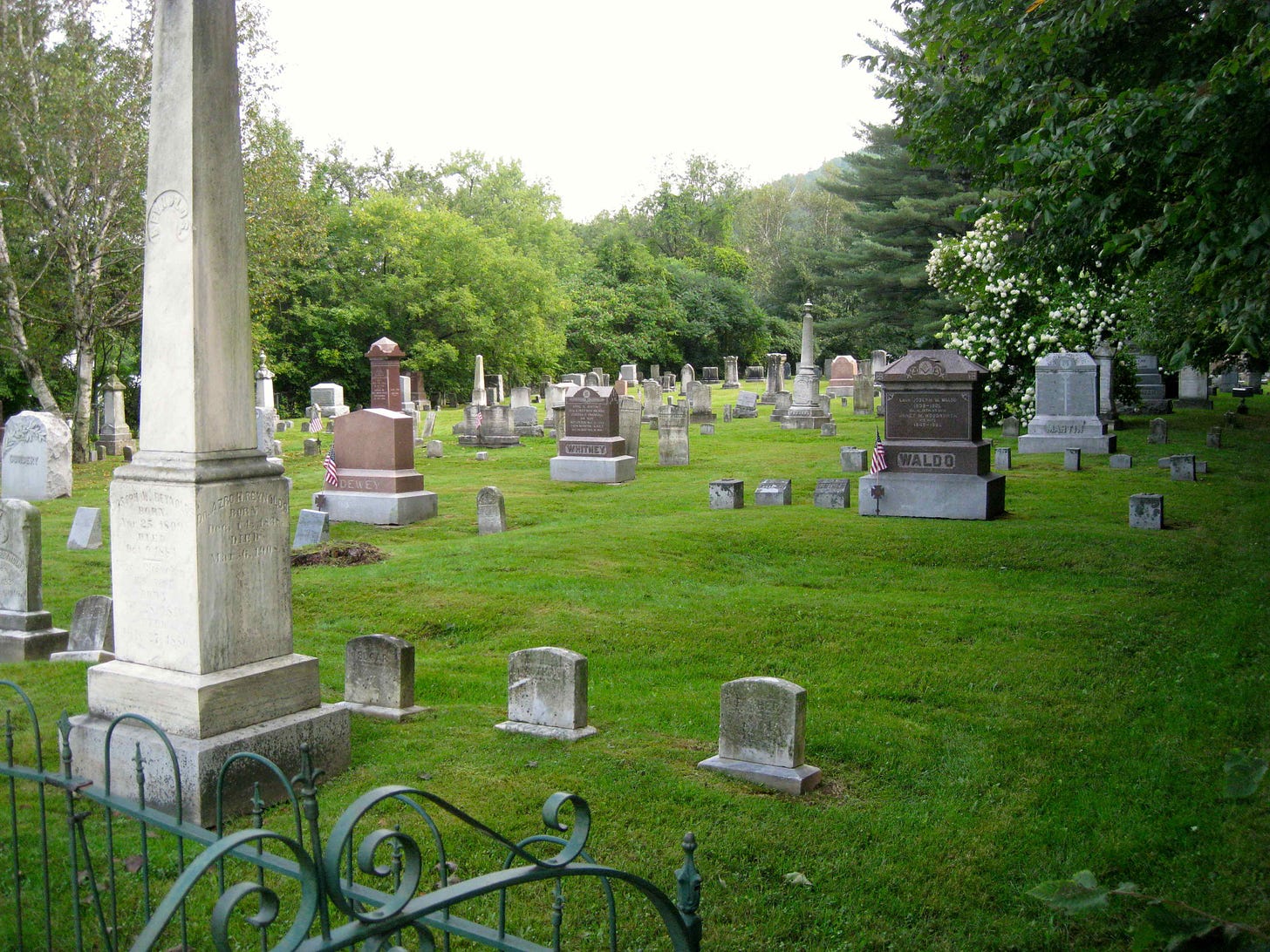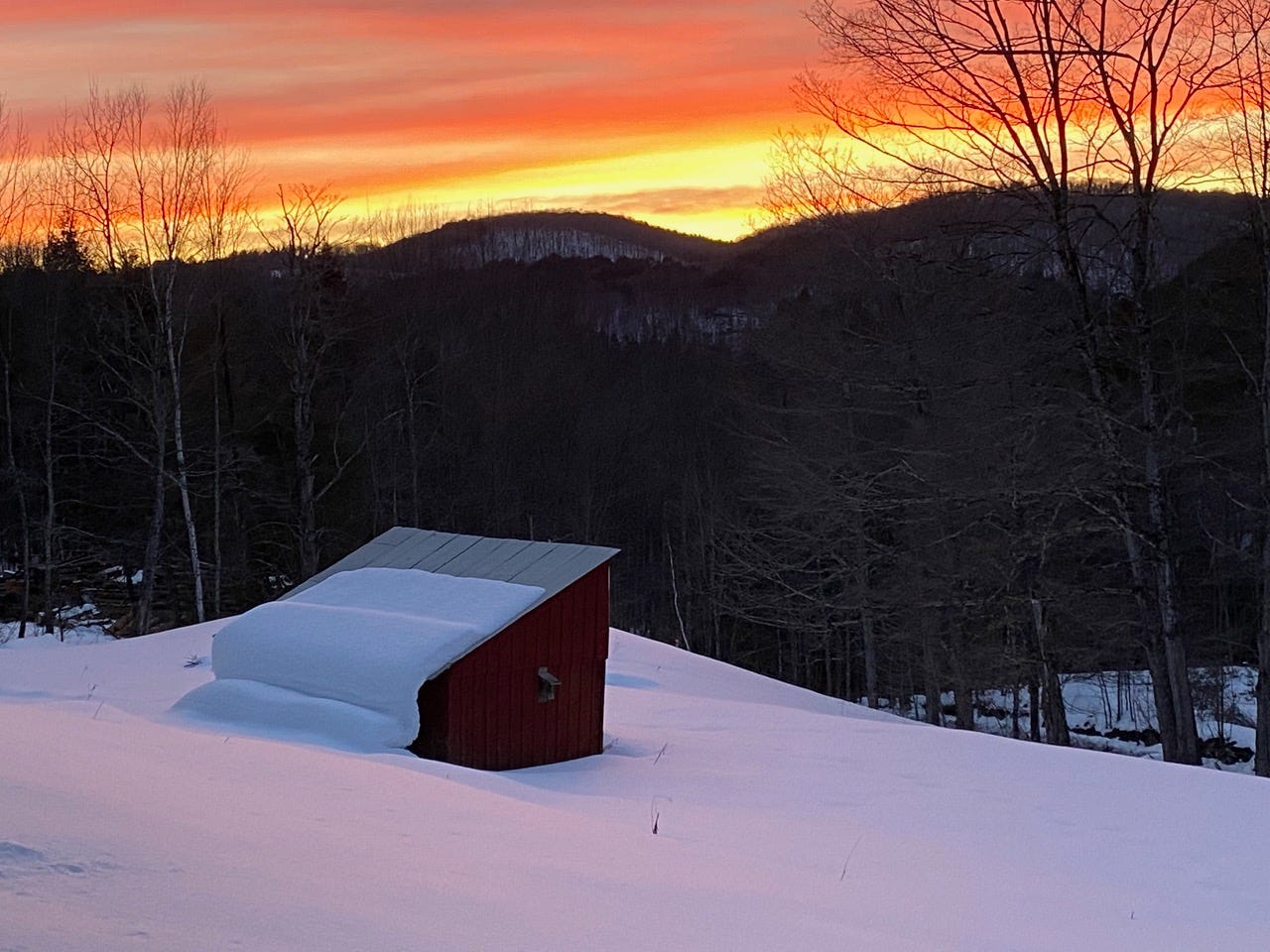Mucking along
“In spring…when the world is mud-licious and puddle wonderful.” —e.e. cummings
Technically, it’s spring, but the blanket of snow and dormant trees outside haven’t gotten the memo. I’ve spotted more wildlife in the past week than I have in months—a red fox, trio of deer and scampering oppossum—along with a neat row of robins standing at attention. They know spring has sprung.
Vermonters have names for the less-than-bucolic transitions before and after winter. Between fall and winter is stick season, while the time between winter and spring is mud season. We’re at peak mud season if judging from the road in front of our house. Having a white dog is not ideal this time of year, especially one who loves anything muddy and wet. Luckily, she is used to heading into the shower to get hosed off after walks. I’ve never been so grateful for a mud room. It’s so-called for good reason.
In addition to being mud season, it’s also sugaring season. When cold nights transition to warmer days, the maple sap starts a-flowin! As I mentioned before, sugaring is a verb in Vermont (okay, a gerund), and the process of converting maple sap to syrup requires an impressive amount of manual labor, equipment, and close attention to ensure quality results. I’m surprised that maple syrup doesn’t cost as much as caviar considering what it takes to produce a single gallon.
We accompanied Brenda to her friend Shane’s property, where hundreds of maple trees are interconnected through hollow plastic sap lines. The snow was so deep we needed to hike up with snow shoes.
“I don’t know why I get so winded,” said Brenda, as we huffed and puffed up the hill, hoisting our boots out of the hip-deep snow. I do. It’s exhausting work! Plus she’s well into her seventies. The three of us helped bring the sap lines above snow level to enable the liquid to flow freely.
About a week later, we visited Brenda at Shane’s sugar house (a wood structure built expressly for boiling sap) to see how the maple syrup was made. While Brenda added logs to the enormous fire and Shane kept an eye on the temperatures, his son Loren took us through a brief tour of his “mini maple museum.”
Inside an adjacent room is a remarkable collection of sugaring-related paraphernalia, from a hand-carved wooden sap collector to vintage buckets, syrup containers, tools, and hundreds of metal taps in a variety of designs. “I’ve been collecting stuff since I was four,” said Loren, whose impressive collection was featured in the local paper. “I’m a ninth generation Vermonter, so my family’s been doing this a long time.” Loren is one of the teens who helped us unload our truck when we arrived here, lifting furniture like it was weightless.
“That’s what you call ‘farm fit,’” said Devan, (the daughter-in-law of David’s friend Rubi) while mucking stalls. “You get very strong doing this sort of work.” She takes care of ducks, goats, chickens, rabbits, cows and more singlehandedly, a prime example of a farm-fit gal. Plus, her animals are among the friendliest I’ve met.
We visited the animals when the kids were in town for a few days. The baby bunny had grown a mass of downy fur, and several goats and one of the cows were heavily pregnant. We started talking about all the different names for various farm animals, and it was quite a learning experience!
Cows are called heifers before giving birth, while bulls are called steer after being castrated, or an ox if used for drafting purposes (and is at least four years old). Meanwhile, a doe is a female goat, a buck is a male goat, and a wether is a castrated male goat. As for horses? After the foal stage, horses are either a colt (male) or filly (female) until the age of three, after which time females become mares and males become either geldings (if they’re castrated) or stallions (if they’re intact). Who knew there were so many different names for farm animals depending on whether or not they’ve given birth or lost their balls?
David had the chance to ride on a sleigh led by two majestic draft horses while helping a neighbor named Bill Council gather sap from sugar maples. He lives in nearby Brookfield in a 12' x 14' cabin he built himself, but has managed to successfully produce award-winning syrup for 35 years using wood fires and classic metal buckets.
Likewise, Rubi’s friend Suzanne Lupien lives off the land in a structure without plumbing or electricity, with the company of her draft horses, Dick and Annie. She grew up comfortably in nearby Norwich, where her father Tony Lupien was the Dartmouth College baseball coach. A Harvard graduate, Suzanne’s father had been a professional baseball player for the Boston Red Sox and later a stockbroker, which makes Suzanne’s off-the-grid lifestyle all the more surprising. An even more dramatic contrast is Suzanne’s nephew, 16-time WWE World Champion wrestler John Cena (now actor, author, rapper, voiceover artist…).
Rubi has been compiling Suzanne’s impressive collection of essays and poetry, which she wrote longhand (she doesn’t own a computer). I’m looking forward to sampling her famous wood-fired bread when she begins offering her CSA (Community Supported Agriculture) boxes this summer.
While the boys and Aidan’s girlfriend Mattie were visiting, we had one non-ski day to bop around, during which time we squeezed in as much as we could, including a visit to Silloway Maple, where Bette, one of the owners, showed us the pool-size metal vat that her granddaughter was busy sterilizing. “You have 15 minutes to get out!” yelled another family member, teasing her. Bette explained that the sap poured into that vessel like a geyser, filling it in minutes.
We tasted fresh, cold sap straight from the tree. It was perfectly clear and subtly sweet. “This is about 2% sweet,” said Bette. “Reverse osmosis converts it to 4%.” We followed her to the store, where we sampled a variety of syrups, from traditional light and dark grades and infused syrups including ginger and habanero (muy caliente).
From there we ventured to Montpelier, where we explored the local crafts at the artists’ collective, sampled chocolate at Rabble Rouser, and warmed up with steamy bowls of pho. We had planned to attend a concert at Artistree that night, but we were all plumb-tuckered from all the driving, so we ended up binge-watching Shrinking (a fun show created by the same folks who created Ted Lasso).
We did succeed in venturing to a live performance the following week, a comedic dramatization of the Book of Ester called a purim spiel. The prime reason we went was to see our family friend Michael Goldman perform (“…this is Michael’s first attempt at a musical performance since elementary school where he played a character buried so deeply in a costume that all his vocals were ‘mysteriously’ inaudible.”). Michael’s brother Steven was visiting from Boston to see the play too, which made the shlep to Concord especially worthwhile, since I hadn’t seen Steven since I was in my teens. As the saying goes, “You never know when you might see someone again.” What was remarkable is that after all this time, there remains a connection having grown up with them.
In an effort to make a connection with some humans in my new surrounds, I signed up for a memoir writing class in nearby Pomfret. The class is taught by Susan Salter Reynolds, a truly impressive writer and book critic who worked for the LA Times for 25 years and now lives in Barnard.
There are six other women in the class, all from different walks of life, all with intriguing life stories. One woman named Ashley runs a farm called Hurricane Flats in nearby South Royalton and writes about the land, the produce, and the people she’s encountered with such riveting detail, it’s obvious that farming is as much a passion as a livelihood for her. Two of the women are Italian Americans in their late 70s (or thereabouts). One grew up in New York, the other in Vermont, though both still carry with them vivid early childhood experiences. Don’t we all? Even though I don’t know my classmates personally, I’ve learned about their lives through their tender writing, just as they’ve learned about me through mine.
On the way to my last writing class I noticed two kids walking along the side of the road wearing nothing more than t-shirts and shorts. The snowbanks were still several feet high but the weather had warmed to a balmy 46°F. I guess that’s what happens when you get used to the weather being in the teens or twenties for months on end.
En route back from class I spotted a headstone in the South Royalton cemetery with the name Waldo. The mystery of his whereabouts is finally solved.
We’re finally seeing some hints of emerging daffodils where the snow has melted. Next week it’s supposed to be in the mid-70s (we had a fresh dusting of snow just last week). After months of silence, the chorus from returning birds is a welcome surprise. I look forward to the trees and flowers blooming, the animals rousing, and the ground drying enough to walk without muck boots.
I’ll keep you posted.
As always, thanks for reading,
Elisse




